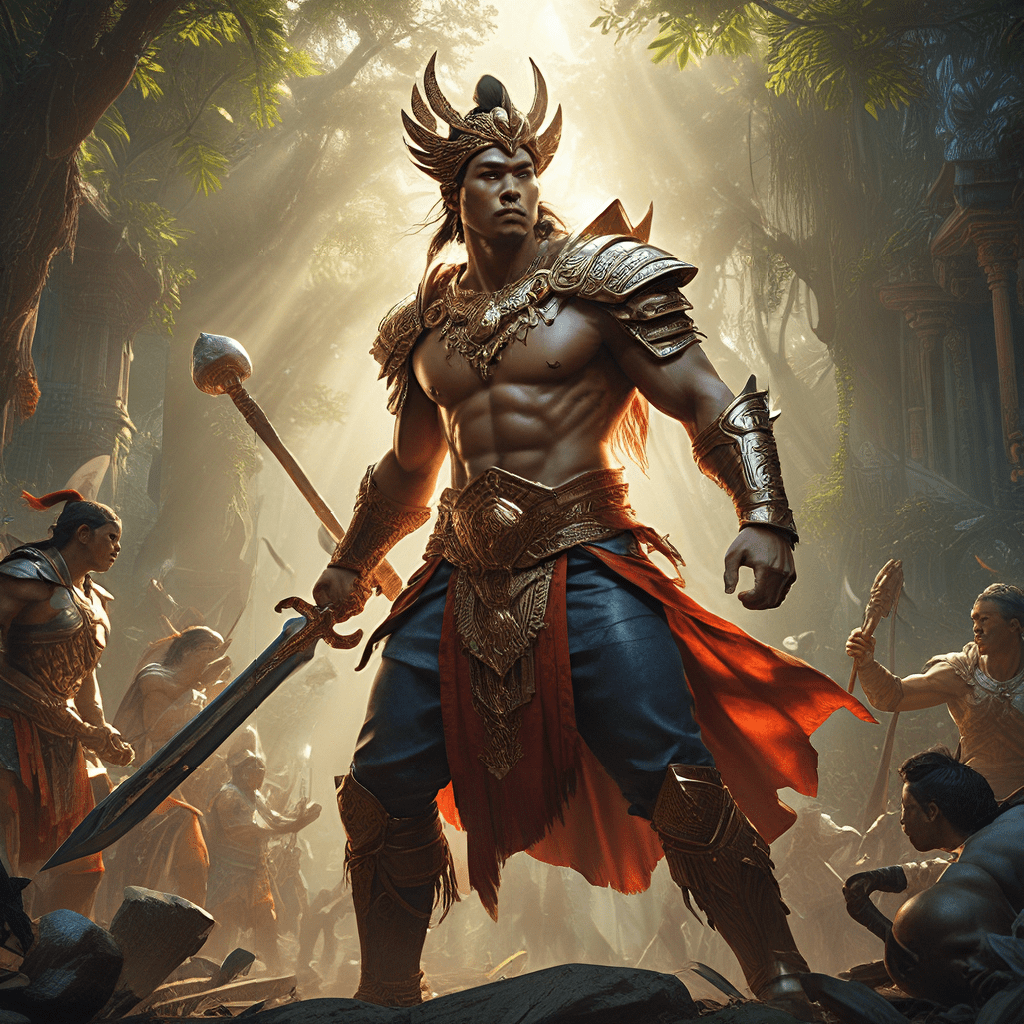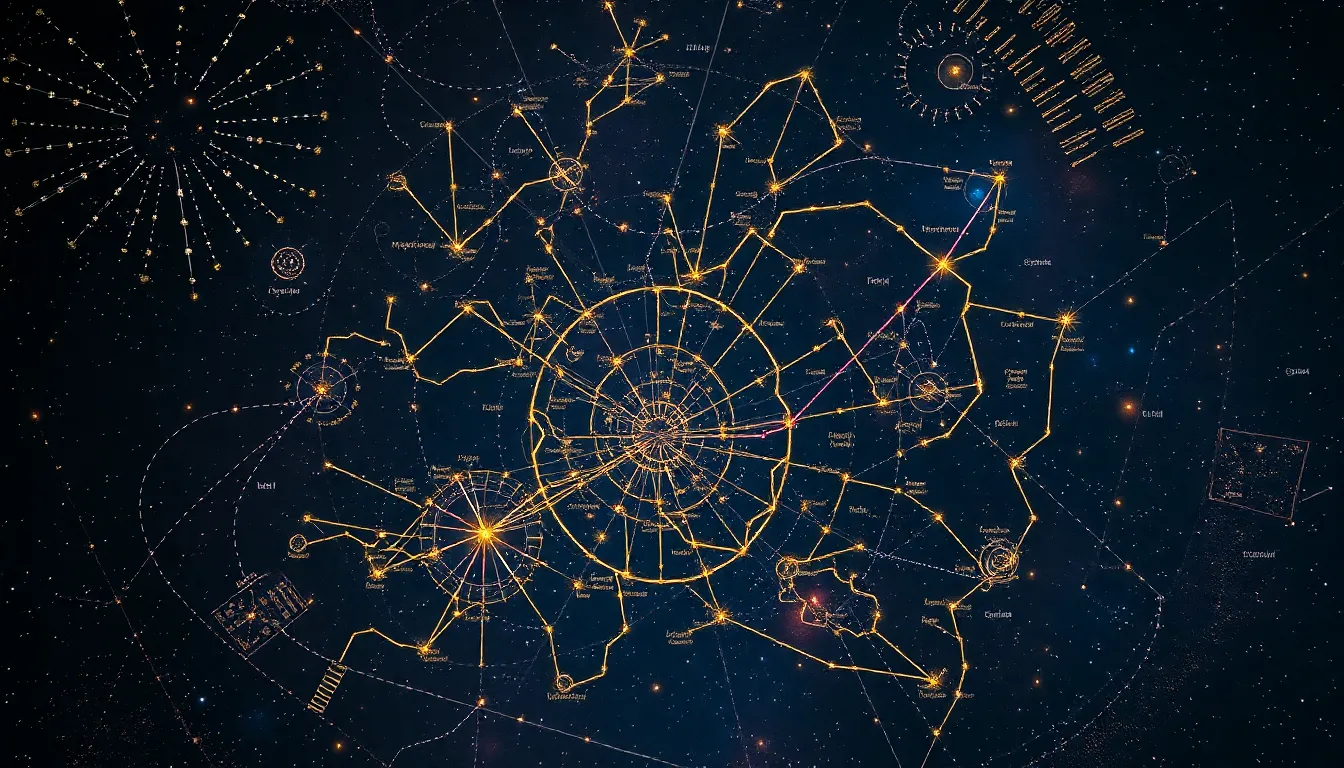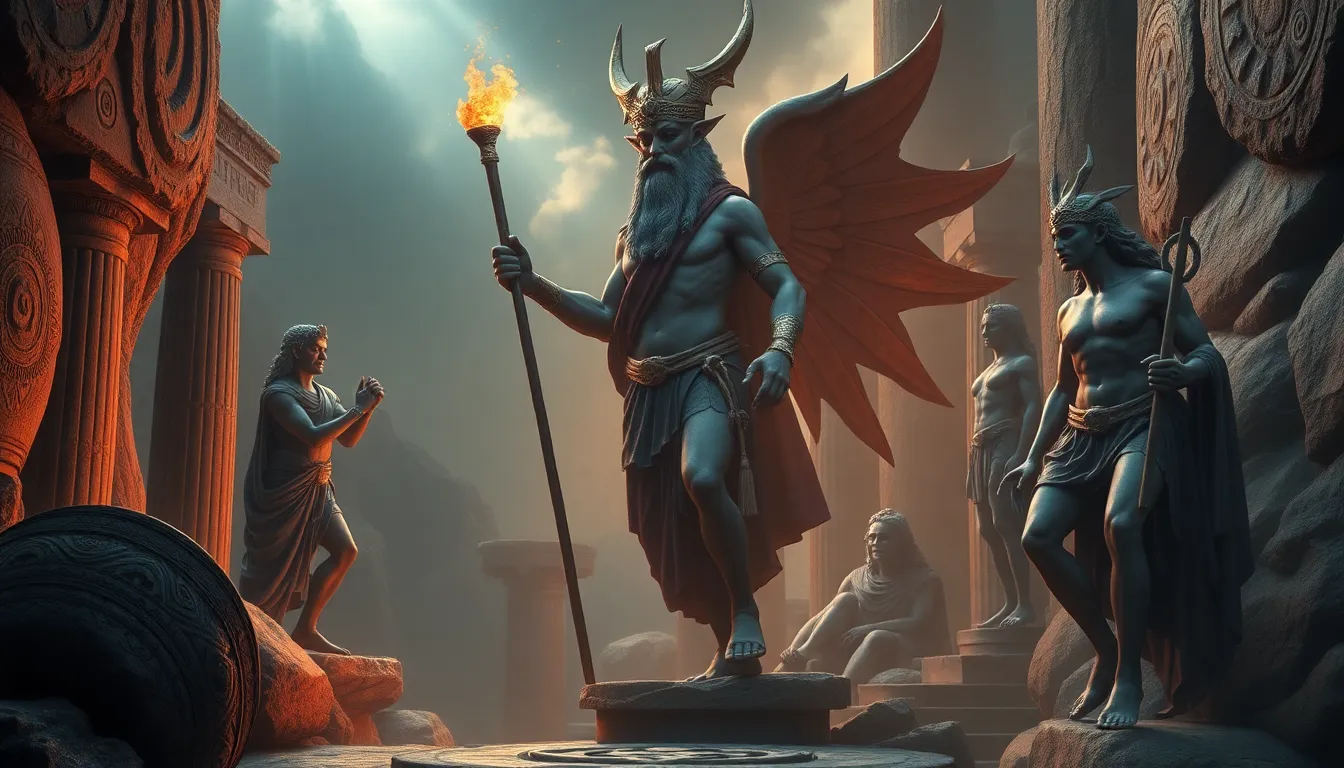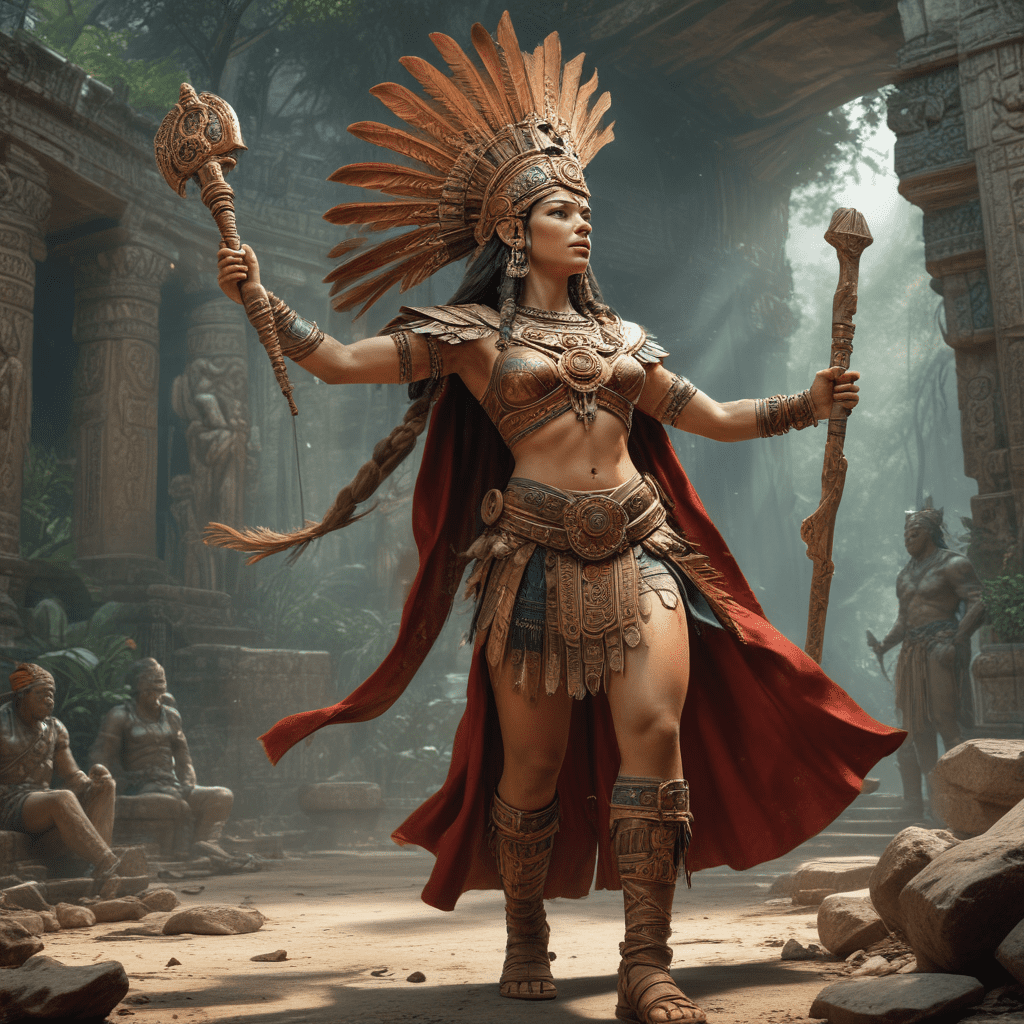Filipino Mythology: A Tapestry of Belief
The Philippines, an archipelago of over 7,000 islands, boasts a rich and diverse tapestry of mythology, woven from centuries of oral tradition and passed down through generations. This mythology is more than just stories; it's a reflection of the Filipino people's values, beliefs, and understanding of the world around them. Filled with powerful deities, courageous heroes, and cunning villains, Filipino mythology offers a captivating glimpse into the country's cultural heritage.
The stories explore themes of creation, love, betrayal, courage, and the constant battle between good and evil, providing timeless lessons and moral guidelines for Filipinos across the ages. From ancient tales of the origins of the world to epic adventures of legendary heroes, Filipino mythology offers a captivating journey into a world of vibrant imagination and profound spiritual beliefs.
The Pantheon of Filipino Gods and Goddesses
At the heart of Filipino mythology lies a vibrant pantheon of gods and goddesses, each wielding unique powers and embodying different aspects of nature and human life. These deities are not just distant figures; they actively intervene in the lives of mortals, offering guidance, dispensing justice, and shaping the fate of individuals and communities.
One of the most prominent deities in the Filipino pantheon is Bathala, the supreme creator god, responsible for bringing forth the world and all its inhabitants. He is often depicted as a benevolent and just ruler, responsible for maintaining cosmic order and upholding moral righteousness.
Another powerful deity is Lalahon, the goddess of fertility and abundance. She is revered for her power over the earth's bounty, ensuring bountiful harvests and healthy offspring. Alongside these major deities, a host of other gods and goddesses reside in the Filipino pantheon, each with their own domains and influence.
The Epic Tales of Filipino Heroes
Filipino mythology is not just about gods and goddesses; it's also a treasure trove of epic tales of courage, strength, and unwavering determination. These stories celebrate the virtues of bravery, loyalty, and selflessness, serving as inspirational narratives for generations of Filipinos.
These heroes often face seemingly insurmountable challenges, battling mythical creatures, overcoming powerful adversaries, and embarking on perilous quests. Their adventures highlight the importance of perseverance, resourcefulness, and the unwavering pursuit of justice.
From the Pages of Mythology: Notable Filipino Heroes
Among the most revered heroes in Filipino mythology is Lam-ang, a legendary warrior known for his strength, courage, and unwavering loyalty. His epic adventures, recounted in the "Biag ni Lam-ang," a classic Filipino epic, detail his valiant battles against mythical creatures and his unwavering devotion to his beloved.
Another notable hero is Bernardo Carpio, a giant of immense strength said to have been imprisoned beneath Mount Banahaw. He is remembered for his heroic deeds, including his fight against the Spanish colonizers and his enduring struggle for freedom.
These heroes serve as powerful symbols of Filipino resilience, courage, and unwavering spirit, inspiring generations with their timeless stories of triumph over adversity.
Dark Shadows: The Villains of Filipino Folklore
Just as Filipino mythology is filled with heroes, it also features a cast of formidable villains, representing the darkness and evil that threaten to disrupt the balance of the world. These villains, often driven by greed, envy, or a desire for power, pose significant threats to the well-being of humans and the natural world.
One of the most fearsome villains in Filipino mythology is Bakunawa, a giant sea serpent said to devour the moon, plunging the world into darkness. Another infamous villain is Aswang, a shape-shifting creature that preys on humans, often disguised as harmless individuals.
These villains, through their cunning and destructive actions, serve as reminders of the constant struggle between good and evil, highlighting the importance of vigilance, courage, and the unwavering pursuit of righteousness.
The Origins of Filipino Mythology
The roots of Filipino mythology are deeply intertwined with the country's pre-colonial past. Long before the arrival of foreign influences, indigenous Filipinos lived in harmony with nature, developing a profound reverence for the forces that shaped their world. This reverence manifested in animistic beliefs, where spirits and deities were believed to reside in all aspects of nature, from trees and rivers to mountains and storms.
These beliefs formed the foundation of Filipino mythology, shaping the stories and traditions that were passed down through generations. The natural world was seen as a vibrant and interconnected realm, where human actions had consequences for the balance of nature, and where spirits and deities intervened in human affairs.
While the specific details of these beliefs varied across different regions of the Philippines, the overarching themes of respect for nature, the interconnectedness of all living things, and the power of the spirit world remained consistent.
The Influence of Animism and Pre-Colonial Beliefs
Animism, the belief that spirits inhabit all things, played a central role in shaping Filipino mythology. The world was seen as teeming with spiritual forces, each with its own unique characteristics and influence. Trees, mountains, rivers, and even animals were believed to be inhabited by spirits that could either aid or hinder humans.
This belief system led to the development of elaborate rituals and ceremonies designed to appease these spirits and ensure their favor. Offerings were made to appease the spirits of the mountains, rivers, and other natural features. This deep connection between humans and the spirit world permeates Filipino mythology, influencing the narratives, characters, and themes that are found in these stories.
The Role of Storytelling and Oral Tradition
Before the advent of written language, Filipinos relied heavily on oral tradition to preserve their history, beliefs, and cultural heritage. Stories were passed down from generation to generation through songs, poems, and elaborate narratives, ensuring that these traditions would survive the test of time.
The art of storytelling was central to Filipino culture, providing a powerful means of transmitting knowledge, preserving cultural values, and fostering a sense of shared identity. These stories, often told around campfires or during community gatherings, became a vital part of Filipino life, shaping their worldview and guiding their actions.
The role of storytellers, known as "Manunulat" or "Kuwentista," was highly revered in Filipino society. They were considered keepers of tradition and wisdom, entrusted with the responsibility of preserving their cultural heritage and transmitting it to future generations.
The Legacy of Filipino Mythology in Modern Culture
Despite the influence of external forces, Filipino mythology continues to exert a powerful influence on modern Filipino culture. Elements of these stories have been woven into contemporary literature, music, art, and film, ensuring that these ancient tales remain relevant and engaging for modern audiences.
Modern Filipino artists draw inspiration from the rich tapestry of mythology, reimagining these stories for contemporary audiences. Writers incorporate mythical creatures and themes into their works, exploring universal themes of love, loss, courage, and sacrifice through a distinctly Filipino lens.
Modern Interpretations and Retellings of Filipino Mythology
Modern Filipino authors and artists are constantly reinterpreting and reimagining the stories of their ancestors, providing fresh perspectives on these timeless narratives. They blend elements of traditional mythology with contemporary themes and perspectives, creating new and engaging narratives that resonate with modern audiences.
These retellings often explore the darker aspects of Filipino mythology, challenging traditional interpretations and offering nuanced perspectives on complex themes of power, identity, and social justice. These reimagined narratives demonstrate the enduring power of Filipino mythology, its ability to adapt and evolve to meet the needs of modern society, while still honoring the rich tapestry of traditions passed down through generations.
FAQ
1. What is Filipino mythology?
Filipino mythology is the collection of stories, myths, and legends that were passed down orally for generations. They depict the beliefs and values of the Filipino people.
2. Who are some of the most important gods in Filipino mythology?
Some key gods include Bathala, the creator god; Lalahon, the goddess of fertility; and Mayari, the goddess of the moon.
3. What are some famous Filipino heroes in mythology?
Lam-ang, a strong warrior; Bernardo Carpio, a giant imprisoned beneath a mountain; and Juan Tamad, a trickster character, are all well-known figures.
4. Are there any famous villains in Filipino mythology?
Yes, Bakunawa, a giant sea serpent who eats the moon; Aswang, a shape-shifting monster; and the Tikbalang, a creature that leads people astray, are prominent villains.
5. How does Filipino mythology influence modern culture?
It inspires artists, writers, and filmmakers, who use these stories in their works to explore themes of identity, culture, and history.



